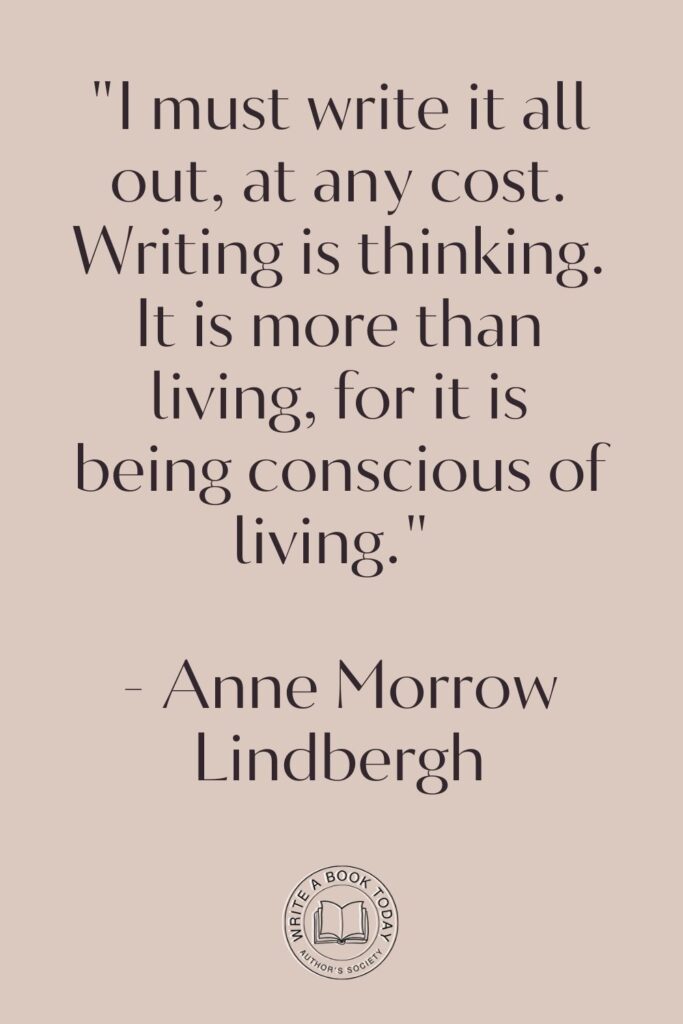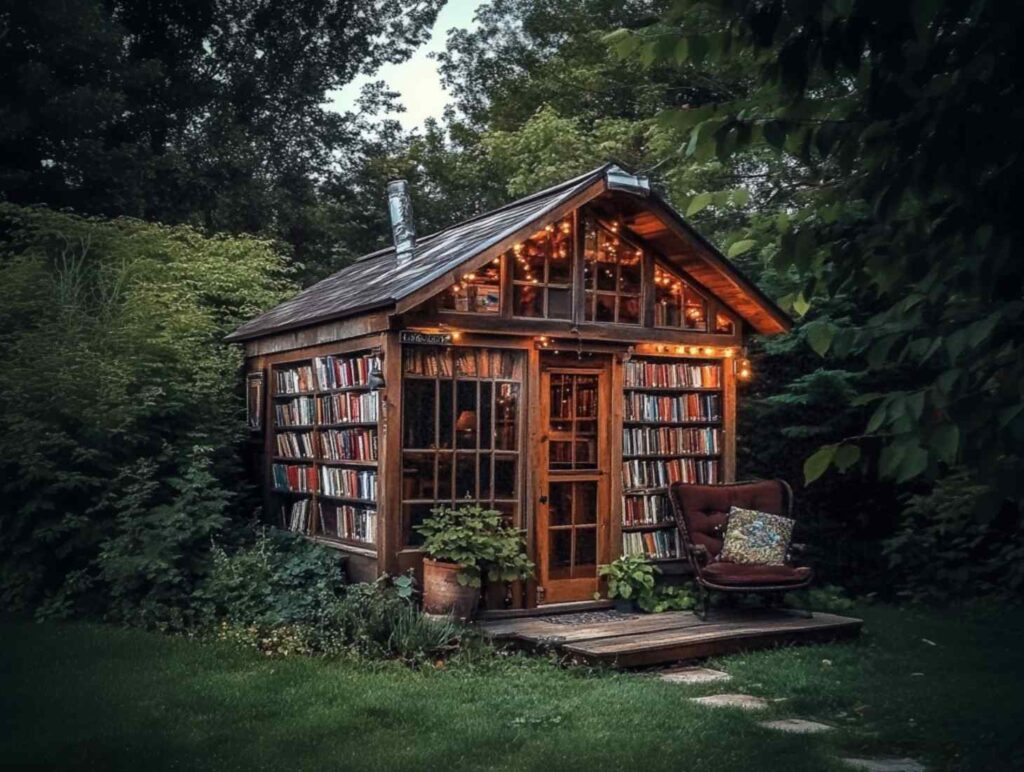Have you ever felt like your writing is stuck in a rut, unable to flow as freely as you’d like?
Perhaps the secret lies not in your skill but in your surroundings. Imagine crafting your words in a space that fuels your imagination, a haven where ideas dance and creativity soars.
This isn’t just a dream – it can be your reality with the right setup. Let’s explore the five essential elements that can transform your writing environment into a sanctuary of inspiration.
Understanding the Ideal Writing Space
The concept of an ideal writing space transcends mere physicality. It is a reflection of the writer’s mind, a sacred ground where thoughts can manifest into words.
A well-crafted writing environment does more than provide comfort; it becomes a catalyst for boosting creativity and enhancing productivity.
The Importance of Your Writing Environment
Your writing environment is more than just a backdrop; it is an active participant in your creative process.
Studies have shown that certain environmental factors can significantly influence cognitive function and emotional well-being.
Whether it’s the calming effect of natural light or the invigorating scent of a favorite candle, each element plays a role in setting the stage for creativity.
To maximize your writing environment, consider incorporating items that resonate with your personal style and preferences.
A favorite chair, a cherished photograph, or a piece of art can serve as powerful motivators, reminding you of your goals and aspirations.
How Your Space Influences Creativity
The way you arrange your writing space can directly impact your ability to focus and create. A cluttered desk may lead to a cluttered mind, while a thoughtfully organized space can clear the mental pathways for new ideas.
Consider the power of color psychology – cool blues and greens can soothe the mind, while vibrant yellows and oranges can energize and inspire.
Assessing Your Current Writing Space
Take a moment to evaluate your current writing setup. Does it inspire you, or does it feel like just another part of the daily grind?
Identifying areas for improvement is the first step toward creating a space that truly supports your creative endeavors.
Perhaps you need better lighting, a more ergonomic chair, or simply a touch of nature to bring life into the room.

Five Key Elements to Enhance Your Writing Space
1. Comfort and Ergonomics: The Foundation of Productivity
A comfortable and ergonomic setup is the cornerstone of any productive writing space. The right furniture can prevent physical strain and encourage longer, more focused writing sessions.
Invest in a chair that supports your back and a desk that accommodates your needs, whether you’re typing away or scribbling notes by hand.
No marketing platform? No social following? No problem!
Publisher Rocket helps you market your debut novel like a pro.
It’s a gamechanger for debut authors – try it today!


Choosing the Right Desk and Chair
Your desk and chair are not mere pieces of furniture; they are tools that facilitate your creative journey. A desk at the right height can prevent strain, while a supportive chair can make hours of writing feel effortless.
Look for adjustable options that allow you to customize your setup to suit your body and writing style.
Consider a chair with lumbar support and a desk with adjustable height to accommodate both sitting and standing positions.
This flexibility can help reduce fatigue and keep your creative energy flowing.
Creating a Flexible Workspace: Sitting and Standing Options
Incorporating flexibility into your workspace can lead to significant improvements in comfort and productivity.
A sit-stand desk allows you to alternate between positions, promoting better circulation and reducing the risks associated with prolonged sitting.
This dynamic setup keeps both your body and mind engaged, ready to tackle the next creative challenge.
| Feature | Benefits |
|---|---|
| Ergonomic Chair | Reduces back pain, enhances focus |
| Sit-Stand Desk | Improves circulation, boosts energy levels |

2. Lighting: The Secret Ingredient for Focus
Lighting is often an overlooked aspect of the ideal writing space, yet it plays a crucial role in maintaining focus and enhancing creativity.
Natural light is ideal, as it can improve mood and alertness. However, when natural light is insufficient, the right artificial lighting can bridge the gap.
Maximizing Natural Light
Position your desk near a window to take full advantage of natural light. Not only does this reduce the need for artificial lighting, but it also provides a pleasant view that can inspire and refresh your mind during writing breaks.
If privacy is a concern, consider sheer curtains that allow light in while maintaining your solitude.
Choosing the Right Artificial Lighting
When natural light isn’t available, opt for warm, diffused lighting that mimics daylight. Avoid harsh fluorescent lights, which can cause eye strain and fatigue.
Instead, use lamps with adjustable brightness to tailor the light to your needs and the time of day.
3. Decluttering: Clear Space, Clear Mind
A cluttered space can lead to a cluttered mind. By maintaining an organized workspace, you can enhance your focus and open the door to greater creativity.
Embrace minimalism, keeping only essential items within reach, and find storage solutions for everything else.
Strategies for Maintaining an Organized Workspace
Implement a filing system for papers and digital files, and regularly assess your workspace for items that no longer serve you.
Use trays, bins, or shelves to keep your desk clear, and establish a routine to tidy up at the end of each writing session.
This practice not only boosts productivity but also creates a welcoming environment for your next writing endeavor.

The Benefits of Minimalism in Your Writing Space
Adopting a minimalist approach can simplify your surroundings and minimize distractions.
By focusing on what truly matters, you create a space that supports your writing goals and fosters a sense of calm and clarity.
This clear-headedness can lead to more profound and impactful writing.
4. Personal Touches: Inspiring Decor and Ambiance
Personal touches can transform a generic workspace into a personal sanctuary. Surround yourself with decor that inspires and motivates you, from artwork and photos to trinkets and mementos.
These elements can serve as visual reminders of your passion and dedication to your craft.
Incorporating Elements of Nature
Bringing nature into your writing space can enhance your mood and creativity.
Consider adding plants, which can improve air quality and add a soothing presence.
A small indoor fountain or a vase of fresh flowers can also bring a touch of tranquility to your environment.
Place a small plant or two on your desk to create a connection with nature. Not only do they add beauty, but they also provide a sense of calm that can help keep your mind focused and relaxed.
Google Docs is for notes. Scrivener is for novels. Upgrade your writing game and try it for free today!

The Role of Color Psychology in Your Space
Color can influence your emotions and productivity. Choose hues that align with your creative goals.
For instance, blue can enhance focus, green can promote harmony, and yellow can stimulate optimism and energy.
Select colors that resonate with you and create an environment that supports your writing ambitions.

5. Sound Management: Finding Your Ideal Noise Level
Sound can either enhance or hinder your creative process. While some writers thrive in silence, others find inspiration in background noise or music.
Discover what works best for you and incorporate it into your writing routine.
Using Music and Soundscapes to Boost Creativity
Music can set the tone for your writing session, providing a rhythmic backdrop that keeps you focused.
Experiment with different genres and soundscapes to find what resonates with you.
Classical music, nature sounds, or even white noise can help block out distractions and maintain your creative flow.
Noise-Canceling Techniques for Better Focus
If silence is your preference, consider investing in noise-canceling headphones or a white noise machine.
These tools can help create a quiet oasis, free from the interruptions of the outside world.
By controlling your auditory environment, you can enhance concentration and foster a deeper connection with your writing.
Feeling lost with your debut novel?
Fiverr Pro connects you with expert editors, designers, and marketers – everything you need to get your book ready for success!

Creating Your Personal Writing Sanctuary
Crafting a dedicated writing zone can significantly impact your productivity and creativity. Whether it’s a corner of a room or a separate office, having a space that is solely yours can enhance your focus and commitment to writing.
Designing a Dedicated Writing Zone
Your writing zone should reflect your personality and creative goals. Decorate it with items that inspire you and keep distractions to a minimum. Ensure it is comfortable and equipped with all the tools you need to write effectively.

Utilizing Public Spaces for Writing Inspiration
Sometimes, stepping out of your usual environment can spark new ideas. Public spaces like libraries, coffee shops, or parks offer unique atmospheres that can invigorate your writing.
Embrace these environments as opportunities to gain fresh perspectives and inspiration.
Experimenting with Different Locations
Don’t be afraid to try writing in various settings to discover where you feel most productive. Whether it’s a bustling café or a quiet nook at home, finding the right location can make all the difference in your creative output.
Maintaining Your Writing Space Over Time
As a writer, your needs and preferences may evolve. Regularly assess and adjust your writing space to ensure it continues to support your creativity and productivity.
Routine Upkeep: Keeping Your Space Fresh
Regular maintenance of your writing space can prevent stagnation and keep your environment inspiring. Refresh your decor, rearrange furniture, or update your tools to maintain a sense of novelty and engagement.

Adapting to Changing Needs as a Writer
As you grow and change as a writer, your space should adapt accordingly. Be open to experimenting with new layouts, tools, or locations to ensure your environment remains conducive to creativity.
Engaging with Your Writing Community
Connecting with fellow writers can provide valuable insights and encouragement. Sharing experiences and tips can enhance your writing journey and foster a sense of community.
Sharing Experiences and Tips with Fellow Writers
Engage with other writers through workshops, online forums, or local writing groups. Sharing your challenges and triumphs can lead to new ideas and collaborations, enriching your creative process.
Encouraging Feedback and Support
Seek feedback from trusted peers to gain fresh perspectives on your work. Constructive criticism can help refine your writing and motivate you to push your boundaries.
Embracing Change: The Evolution of Your Ideal Writing Space
Your ideal writing space is not a static entity; it evolves with you. Embrace changes and be open to experimenting with new elements that can enhance your creativity.
By continuously refining your environment, you create a dynamic space that inspires and supports your writing journey.
Remember, the perfect writing space is one that reflects your unique style and needs. Whether it’s filled with personal mementos or minimalist and serene, it should be a place where your creativity can flourish.
Take the time to craft a space that makes you excited to write, and watch your creativity soar.








